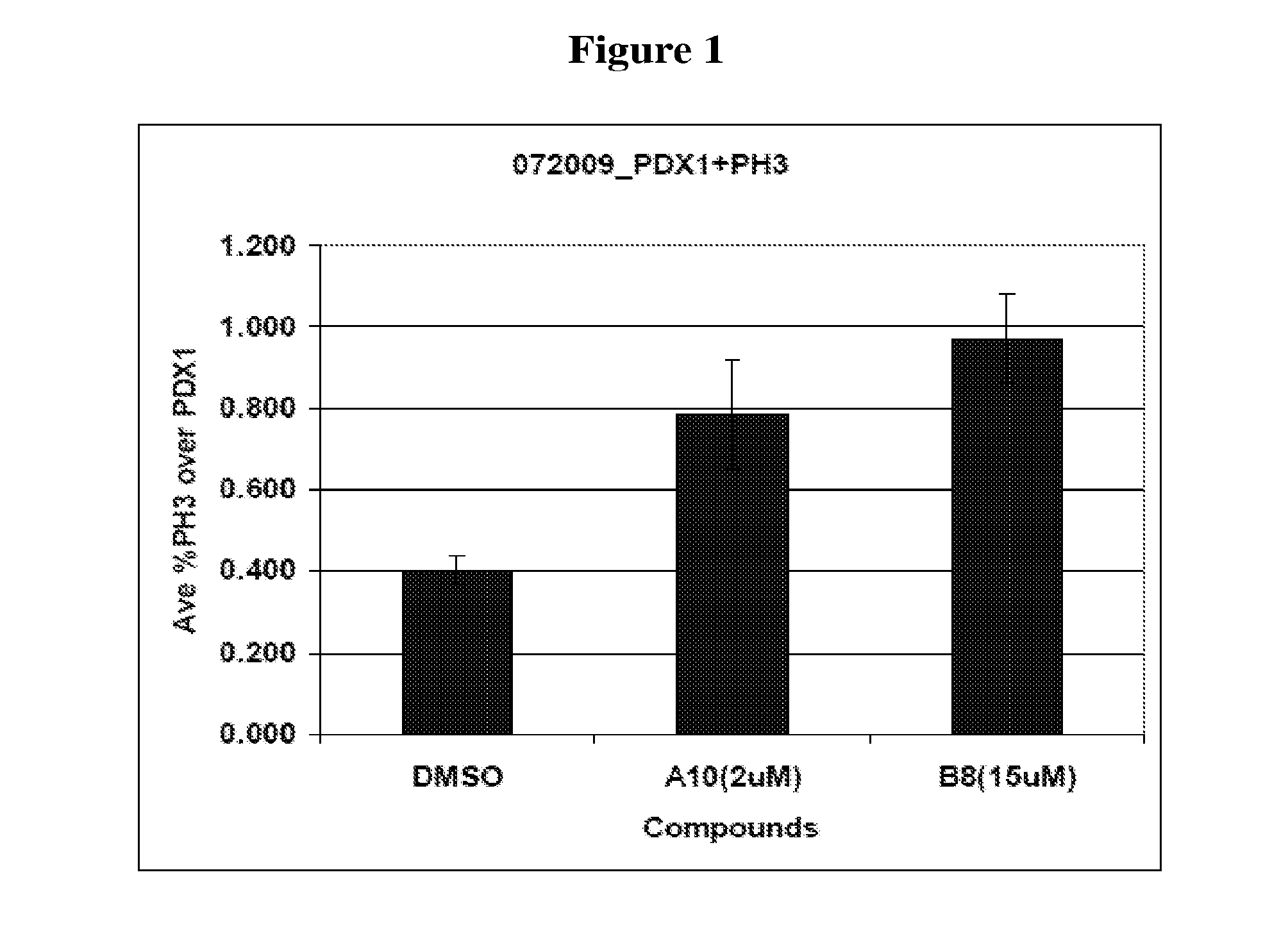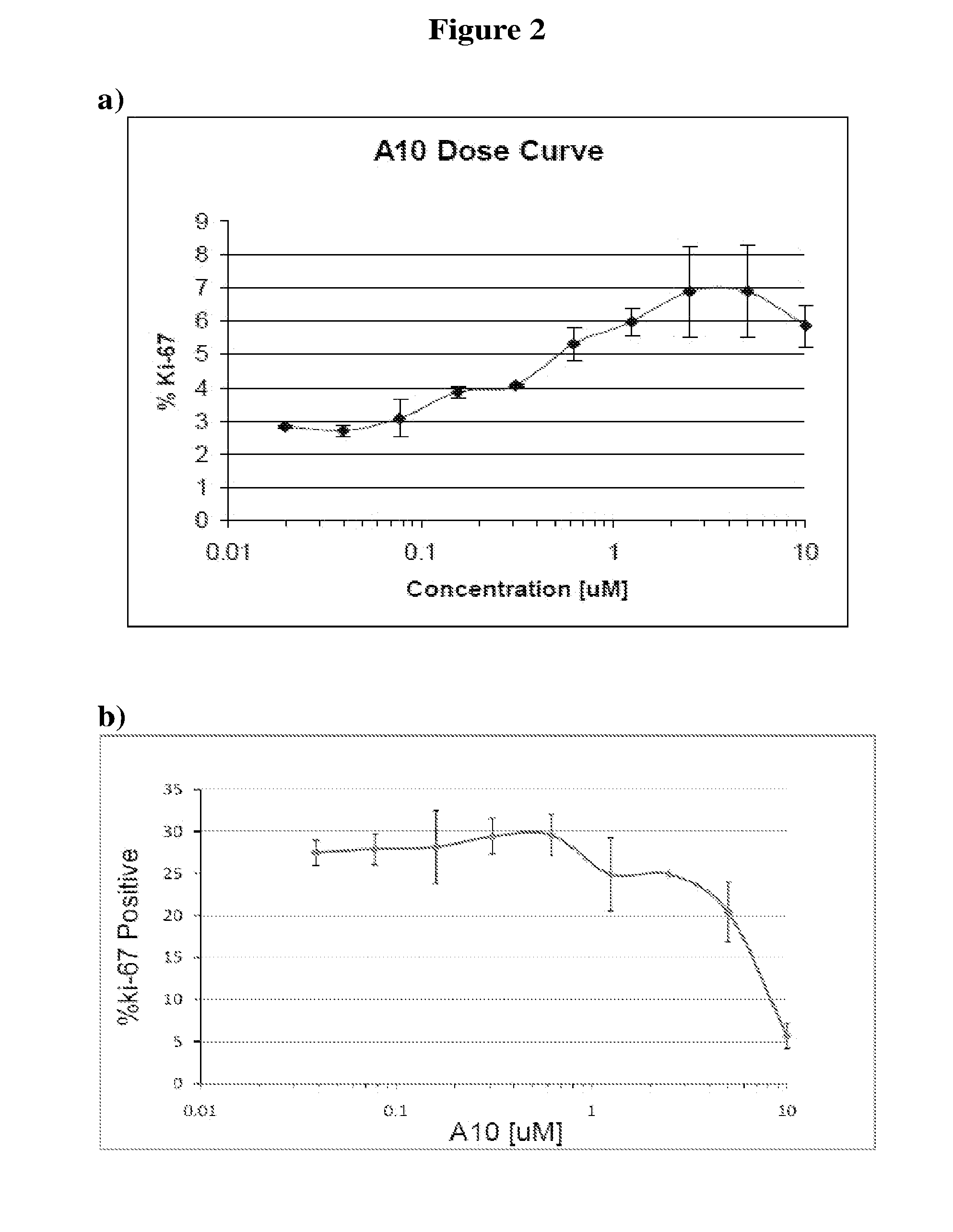Beta-cell replication promoting compounds and methods of their use
a technology of promoting compounds and -cells, applied in the direction of drug compositions, chemical treatment enzyme inactivation, metabolic disorders, etc., can solve the problems of reducing the mass and function of pancreatic -cells, reducing the ratio of cells, and reducing the number of cells. , to achieve the effect of increasing the ratio of cells and increasing the replication ra
- Summary
- Abstract
- Description
- Claims
- Application Information
AI Technical Summary
Benefits of technology
Problems solved by technology
Method used
Image
Examples
example 1
[0428]Rat islets were isolated as previously described in Gotoh M, Maki T, Kiyoizumi T, Satomi S, Monaco A P: An improved method for isolation of mouse pancreatic islets. Transplantation 40:437-438, 1985, contents of which are herein incorporated by reference in their entirety. Isolated islets were cultured overnight in a tissue culture incubator. The following morning, islets were trypsinized into cellular clusters of 1-3 cells, re-suspended in islet media (Mediatech 99-786-CV; 10% FBS serum (Valley Biomedial BS3033); 8.3 mM Glucose (Sigma G7528); 1× Penicillin / Streptomycin (Invitrogen 15070-063); 1× Glutamax (Invitrogen 35050-079)) and plated into the wells of a 96-well plate (Sigma CLS3904) that had been coated with 804G (a rat bladder carcinoma cell line) conditioned media. The cellular plating density was 60 k cells / well and greater than 95% viability was confirmed at the time of plating. The islet cells were allowed 48-hours to adhere at which time the media was...
example 2
PH3 Induction by A10 and B8
[0430]Using a protocol similar to as described in Example 1, β-cells were treated with A10 (2 μM), or B8 (15 μM). Phosphohistone 3 antibody (Millipore 06-570) was used to visualize proliferating cells. As can be seen in FIG. 1, both A10 and B8 increased ratio of PH3 over PDX-1 relative to a control DMSO treatment.
example 3
A10 Specifically Increases Replication of β-Cells
[0431]Using a protocol similar to as described in Example 1, β-cells or mouse dermal fibroblasts were treated with 10 uM, 5 uM, 2.5 uM, 1.25 um, 0.625 uM, 0.3125 uM, 0.156 uM, 0.078 uM, 0.04 uM, or 0.019 uM of A10. As seen in FIG. 2a, % of Ki-67 positive β-cells were seen to increase in a dose dependent manner. However, as seen in FIG. 2b, % Ki-67 positive mouse dermal fibroblasts did not change on treatment with A10. These results are consistent with the little or no ADK expression in mouse fibroblasts relative to mouse islets as seen from Western blot analysis (data not shown).
PUM
| Property | Measurement | Unit |
|---|---|---|
| diameter | aaaaa | aaaaa |
| diameter | aaaaa | aaaaa |
| diameter | aaaaa | aaaaa |
Abstract
Description
Claims
Application Information
 Login to View More
Login to View More - R&D
- Intellectual Property
- Life Sciences
- Materials
- Tech Scout
- Unparalleled Data Quality
- Higher Quality Content
- 60% Fewer Hallucinations
Browse by: Latest US Patents, China's latest patents, Technical Efficacy Thesaurus, Application Domain, Technology Topic, Popular Technical Reports.
© 2025 PatSnap. All rights reserved.Legal|Privacy policy|Modern Slavery Act Transparency Statement|Sitemap|About US| Contact US: help@patsnap.com



